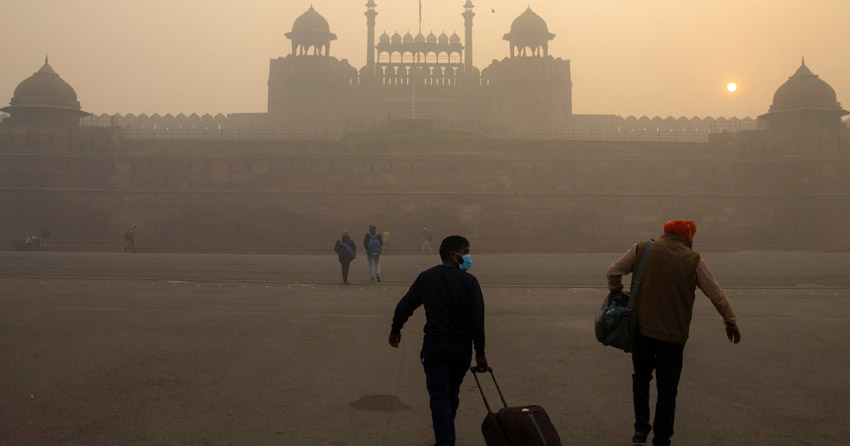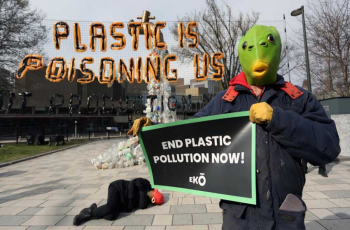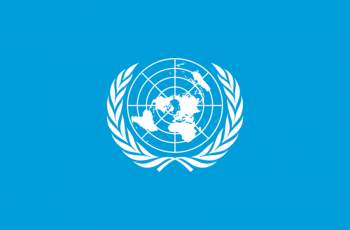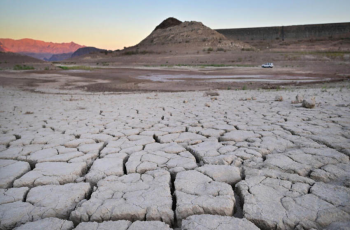WHO Warns Pollution Kills As It Tightens Air Quality Guidelines
Agency calls for urgent action to tackle one of biggest environmental threats to human health, with Southeast Asia being the worst-affected region.

Delhi is among the world's most polluted cities. File Photo: Danish Siddiqui/Reuters
The World Health Organization (WHO) has tightened its air quality guidelines for the first time since 2005, warning that air pollution is one of the biggest environmental threats to human health, causing seven million premature deaths a year.
The United Nations health agency said on Wednesday that urgent action was needed to reduce exposure to air pollution, ranking its burden of disease “on a par with other major global health risks such as unhealthy diet and tobacco smoking”.
“WHO has adjusted almost all the air quality guideline levels downwards, warning that exceeding the new … levels is associated with significant risks to health,” it said. “Adhering to them could save millions of lives.”
The new guidelines aim to protect people from the adverse effects of air pollution and are used by governments as a reference for legally binding standards.
The WHO last updated the guidelines in 2005, which had a significant impact on policies to clean up the world’s air.
But the UN health agency said that in the 16 years since, a much stronger body of evidence had emerged, showing how air pollution affects health at lower concentrations than previously understood.
“The accumulated evidence is sufficient to justify actions to reduce population exposure to key air pollutants, not only in particular countries or regions but on a global scale,” the organisation said.
Greenpeace noted that many major cities around the world were already in breach of the 2005 guidelines and said more meaningful action was urgently required.
“What matters most is whether governments implement impactful policies to reduce pollutant emissions, such as ending investments in coal, oil and gas and prioritizing the transition to clean energy. The failure to meet the outgoing WHO guidelines must not be repeated,” Aidan Farrow, a Greenpeace International Air Pollution Scientist based at the University of Exeter in the UK, said in a statement.
Asia worst hit
The WHO’s new guidelines include recommendations for air quality levels for six pollutants, including ozone, nitrogen dioxide, sulphur dioxide and carbon monoxide.
The other two are PM10 and PM2.5 – particulate matter equal or smaller than 10 and 2.5 microns in diameter.
Both are capable of penetrating deep into the lungs but research shows PM2.5 can even enter the bloodstream, primarily resulting in cardiovascular and respiratory problems, but also affecting other organs, said the WHO.
In response, the PM2.5 guideline level has been halved.
In 2019, more than 90 percent of the world’s population lived in areas where concentrations exceeded the 2005 AQG for long-term PM2.5 exposure, according to the WHO.
Greenpeace said that last year 79 of the the world’s 100 most populous cities had annual mean PM2.5 air pollution levels that breached the 2005 guidelines, according to data from IQAir. With the tightening of the guidelines, 92 would be in breach, it said.
Among the cities with the dirtiest air were Delhi (PM2.5 exceeded 17-fold), Lahore (16-fold), Dhaka (15-fold), and Zhengzhou (10-fold)
It noted that in eight of the world’s 10 biggest cities no PM2.5 data was available.
The new guidelines come just weeks before the COP26 global climate gets underway in the Scottish city of Glasgow on October 31.
The WHO said that alongside climate change, air pollution was one of the major environmental threats to human health. Improving air quality would enhance climate change mitigation efforts, and vice versa, it added.
“Air pollution is a threat to health in all countries, but it hits people in low- and middle-income countries the hardest,” said WHO chief Tedros Adhanom Ghebreyesus.
The WHO said that while air quality had markedly improved since the 1990s in high-income countries, the global toll in deaths and lost years of healthy life had barely declined, as air quality had generally deteriorated in most other countries, in line with their economic development.
“Every year, exposure to air pollution is estimated to cause seven million premature deaths and result in the loss of millions more healthy years of life,” the WHO said.
In children, this could include reduced lung growth and function, respiratory infections and aggravated asthma.
In adults, coronary heart disease – and stroke are the most common causes of premature death attributable to outdoor air pollution.
Evidence is also emerging of other effects such as diabetes and neurodegenerative conditions, the organisation said.
-

Indigenous people march in Brazil to demand land demarcation
2024-04-24 -

Talks on global plastic treaty begin in Canada
2024-04-24 -

Colombian court recognizes environmental refugees
2024-04-24 -

Asia hit hardest by climate and weather disasters last year, says UN
2024-04-23 -

Denmark launches its biggest offshore wind farm tender
2024-04-22 -

Nobel laureate urges Iranians to protest 'war against women'
2024-04-22 -

'Human-induced' climate change behind deadly Sahel heatwave: study
2024-04-21 -

Moldovan youth is more than ready to join the EU
2024-04-18 -

UN says solutions exist to rapidly ease debt burden of poor nations
2024-04-18 -

Climate impacts set to cut 2050 global GDP by nearly a fifth
2024-04-18
